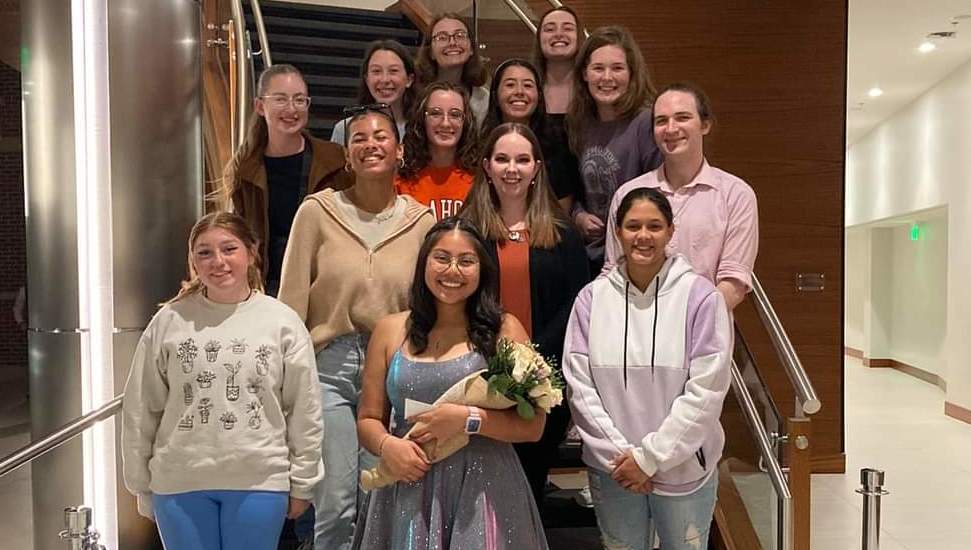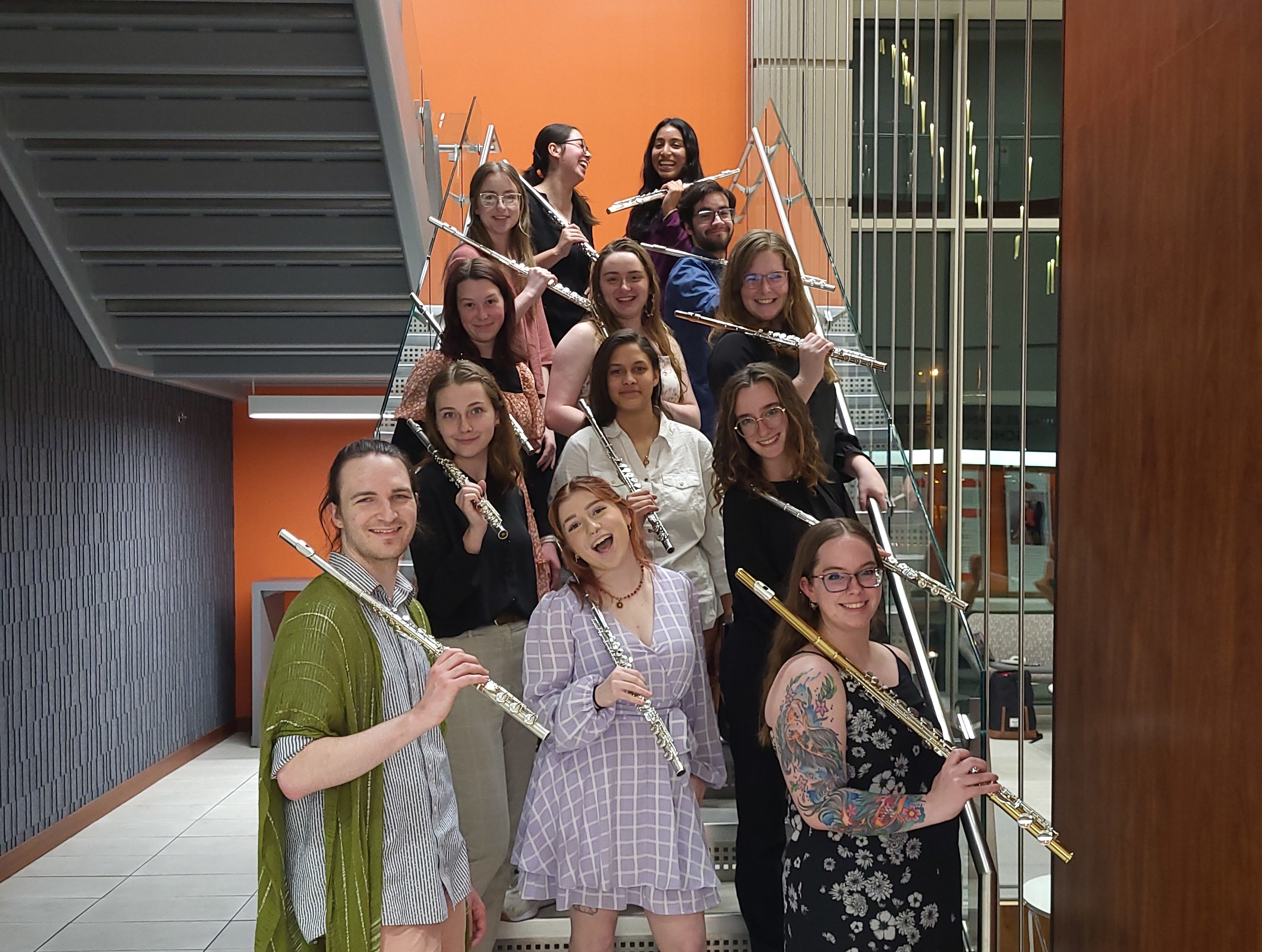This project is now in update mode. Check back regularly to see how things are progressing.
Oklahoma State University Flute Ensemble Performs at the National Flute Association Convention
The Oklahoma State University Flute Ensemble has performed together since fall 2018. Featured on the Edmon Low Library’s noontime concert series, the ensemble is comprised of flute performance and music education majors and includes piccolo, C flutes, alto, and bass.
The Flute Ensemble is under the direction of Dr. Erin K. Murphy in Stillwater, Oklahoma, USA. It is comprised of 16 undergraduate and graduate performance majors. The ensemble rehearses weekly and has given performances at the Oklahoma Flute Society Flute Fair Gala Concert (2022), Edmon Low Library Noon Recital Series, Southwestern Oklahoma State University Flute Day (2020), and yearly Greenwood School of Music Flute Studio Recitals. Last year, the group also performed a recital at the National Flute Association Convention in Phoenix, Arizona.
The Flute Ensemble plans to perform at the National Flute Association Convention to represent the musical talents of the Greenwood School of Music. We will perform pieces representative of the beauty and power of the forces of nature. Our program consists will feature works by Jonathan Cohen, Michael Davis, and Catherine McMichael. In addition, it will feature the talents of the OSU vocal department in a piece written for voice and flute choir accompaniment.
We plan to use the funds to cover expenses associated with performing and attending the National Flute Association's Convention. Covering the costs of travel, food, and rooming would alleviate the financial burden on the student ensemble members make this more accessible!
$10
Ancient
One of the oldest instruments discovered by archaeologists is a flute made out of animal bone. It is dated to be many thousands of years old!
$25
Medieval
The flute is commonly portrayed in Medieval artwork as a horizontally blown flute with six holes, as opposed to the vertically blown recorder. Most commonly used in secular music (outside of the church), the flute would have been used in dance music!
$50
Renaissance
In the renaissance, the most popular flute was in the form of a blockflöte, more often referred to as a recorder. These instruments were played in consorts, recorder ensembles that included many different ranges of vertical flutes from contrabass (very large) to garklein (very small)!
$100
Baroque
Traverso, known more commonly as baroque flute, begins to resemble its modern counterparts. Many of the oldest pieces of flute ensemble repertoire were written in this era, such as the Boismortier Concertos for five flutes.
$250
Classical
The flute was used commonly in operas, symphonies, and as a solo instrument quite often in the Classical era. The most commonly called for work at auditions is Wolfgang Amadeus Mozart's Concerto in G major, a piece that most flutists know fondly!
$500
Romantic
The flute lost popularity throughout this era but regained it toward the latter half due to the prevalence of the Paris Conservatory. Near the turn of the 20th century, much of the repertoire that is commonly played today was written for the instrument as we know it today. German inventor and avid musician Theobald Böhm helped to modernize and revive this instrument, many developments of which have been left unchanged!
$750
Modern
The bridge between the Romantic and Modern eras brought about Impressionist and Expressionist movements in both art and music. Composers like Debussy and Ravel used the flute to represent various aspects of nature as in the Afternoon of a Faun or the ballet Daphnis and Chloe, respectively!
$1,000
Contemporary
The stable version of the flute led to much experimentation with odd sounds. In addition, technology as we know it today brought a new medium of which to make music. So between experimental works with electronics, neo-classical and neo-romantic works, and everything in between, there is music written today for just about everyone's taste!









